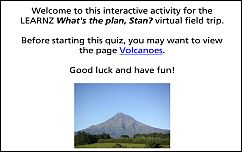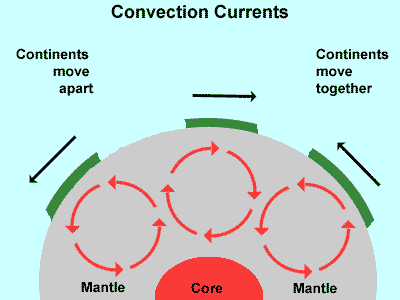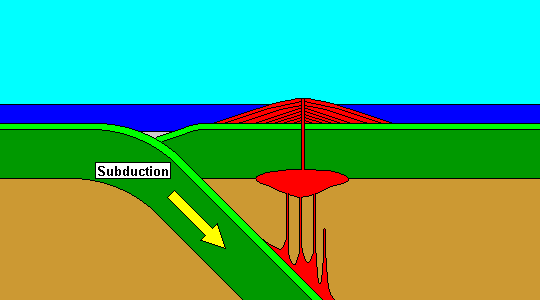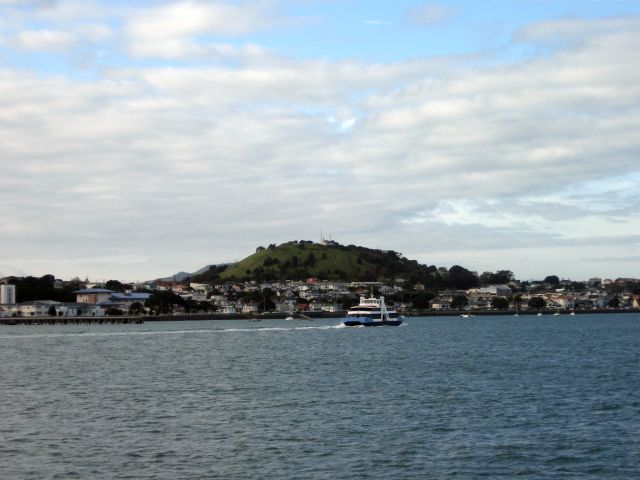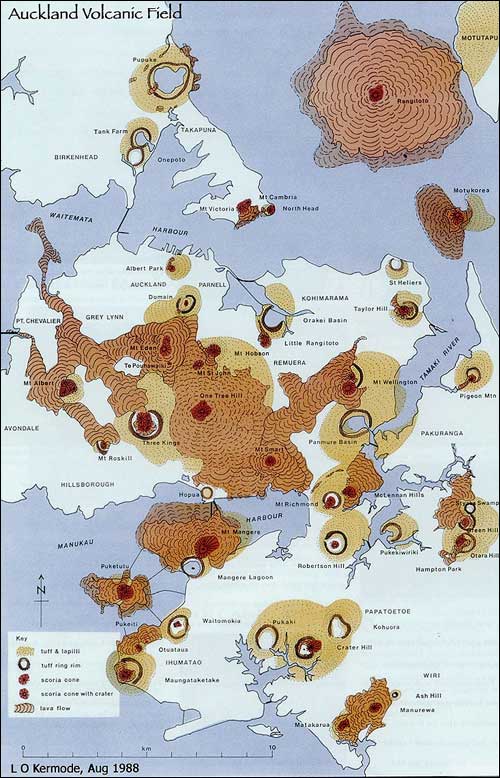Plate Tectonics
Most volcanoes are formed by the movement of tectonic plates on the surface of the earth. These plates are basically huge pieces of rock that ‘float’ on the mantle. The tectonic plates are in very slow, constant motion. Sometimes they move towards each other, other times they move apart, and still other times one will sink while the other rises above it.
Subduction zone
Beneath New Zealand, the Pacific tectonic plate is colliding with the Australian tectonic plate and is being forced down into the Earth’s mantle. This creates a zone of stress, called a subduction zone. Most of the North Island’s active volcanoes are associated with this process.
Magma
As the Pacific plate is forced down into the mantle, the oceanic crust, which caps the Pacific plate, begins to heat up. Under increasing pressure and temperature, the former crustal material undergoes chemical reactions and molten magma is formed. This magma is very hot and contains gases making it lighter than the surrounding mantle. It rises towards the surface of the Earth at weak points in the Earth’s crust.
Once this magma reaches the surface at the vent it is called lava (if it erupts passively) or tephra (if it is blasted apart explosively in the vent).
Taupo volcanic zone
The volcanic region of the central North Island is called the Taupo Volcanic Zone. It is made up of a line of active and potentially active andesite stratovolcanoes (volcanic cones) stretching from Ruapehu in the south to White Island in the north.
Auckland volcanic field
Unlike the Taupo Volcanic Zone, the volcanoes of Auckland are not related to a plate boundary. Instead, they have formed in the middle of a plate. This sort of activity is known as ‘intraplate’ volcanism. Sometimes these areas of intraplate volcanism are referred to as “hotpots” or “mantle plumes”. The source of magma in these areas is the mantle. The type of magma produced in these areas is called basalt.
Monogenetic eruptions
The Auckland volcanic field is made up of monogenetic volcanoes, which means they use up all of their magma during the eruptive period, and each new magma batch or 'bubble' produces a new volcano. That is why there are so many individual volcanoes in the Auckland volcanic field.
Frequently active versus dormant volcanoes
In New Zealand, volcanoes can be divided into two groups:
- Frequently active volcanoes such as White Island, Tongariro-Ngauruhoe, Ruapehu and Raoul Island in the Kermadecs.
- Dormant (sleeping) volcanoes such as the Auckland Volcanic Field, Mayor Island, Rotorua, Okataina, Taupo, Taranaki and the volcanic fields in Northland.
The North Island is home to all of New Zealand’s active volcanoes today. The South Island’s volcanic heritage belongs to a more distant past but is still evident today at sites such as the Takitimu Mountains, Mount Tapuaenuku, Mount Somers, Oamaru, Otago Peninsula, Banks Peninsula, Timaru and Solander Island.



